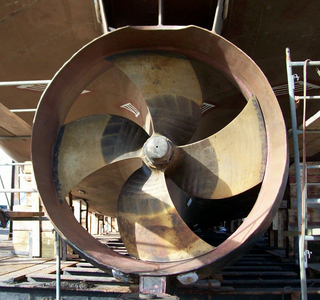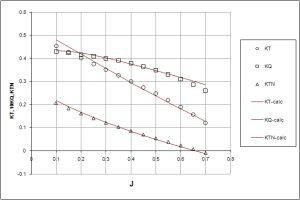Nozzle Influence
PropElements does indeed allow for the design and analysis of ducted propellers. However, we want to make clear that PropElements is a propeller blade design and analysis tool. It is not a nozzle design tool. That said, PropElements can account for the various hydrodynamic influences that use of a nozzle will impart on a propeller’s performance and design.
When using PropElements for ducted propellers, you have the ability to select from a library of several popular nozzle styles with ways to adjust the nozzle’s influence from the library standard: variation in nozzle length (where we often see longer nozzles used for low-speed high-thrust applications), a nozzle “effectiveness” (to apply a correction for the influence due to external factors such as use of a “head box” or integration to the hull, which reduces the flow fully around the nozzle), and a tip-gap factor (for larger than standard tip gaps). There are two principal hydrodynamic influences that are predicted and applied to a propeller design or analysis in PropElements.
The first influence is a supplemental change in the inflow velocity (and its radial distribution) due to the existence of a surrounding nozzle. This is a nozzle “induced velocity”, which can be accelerating, decelerating, or non-contributing. The second influence is a prediction of the axial force developed by the nozzle for the condition being evaluated. Nozzles can also contribute a beneficial thrust effect (on a tugboat, for example) or a detrimental appendage drag (in noise-suppressing “pumpjet” style nozzles). PropElements predicts these force contributions, so you can determine the total useful thrust for the integrated unit. Prediction models for these nozzle contributions were developed from in-house R&D studies of nozzle performance, mostly from our large collection of published model test reports but also with supplemental CFD computations.
Tunnel thrusters can also be evaluated in PropElements, which applies the same framework as for propulsor nozzles, but with data for tunnel length and inlet fairing radius. Finally, PropElements can export properly scaled 3D CAD files for several of the library nozzles.
Dive into PropElements: hydrocompinc.com/solutions/propelements


